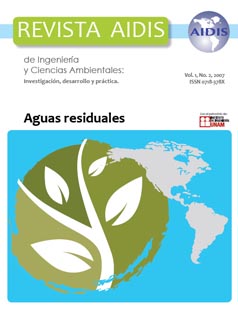Efeito da adição de cloreto férrico ao esgoto afluente a um reator UASB
Main Article Content
Abstract
The discharge of effluents containing nitrogen and phosphorus compounds, even when previously treated, has been a source of problems to the water bodies from which this water is used for public supply. These compounds are nutritional for algae, causing blooms that produce toxins and result in higher treatment costs (application of activated carbon, pre‐chlorination). Therefore, their removal has become as important as the reduction of the carbonaceous organic load. The upflow anaerobic sludge blanket reactors – UASB are a very compact type of treatment, with simple operation and monitoring procedures and, consequently, they present very competitive implementation and operation costs in comparison to other known processes. This study intends to assess the UABS capacity to remove phosphorous and organic matter with the injection of coagulants (ferric chloride, in this case) at the raw sewage inlet and through the sludge blanket. The purpose is to analyze COD and phosphorous removal in an actual UASB system that cannot be enlarged, located in an area of water sources. It is a simple and compact process with a relatively low sludge production, if compared to other aerobic processes. If an increase of the UABS treatment capacity with the simple addition of coagulants is found, this alternative may be an option to several systems that operate under similar conditions.
Article Details
How to Cite
[1]
Scanho Marques de Queiroz, R., Seckler Ferreira Filho, S. and Passos Piveli, R. 2009. Efeito da adição de cloreto férrico ao esgoto afluente a um reator UASB. Revista AIDIS de ingeniería y ciencias ambientales: Investigación, desarrollo y práctica. 1, 2 (Nov. 2009).


